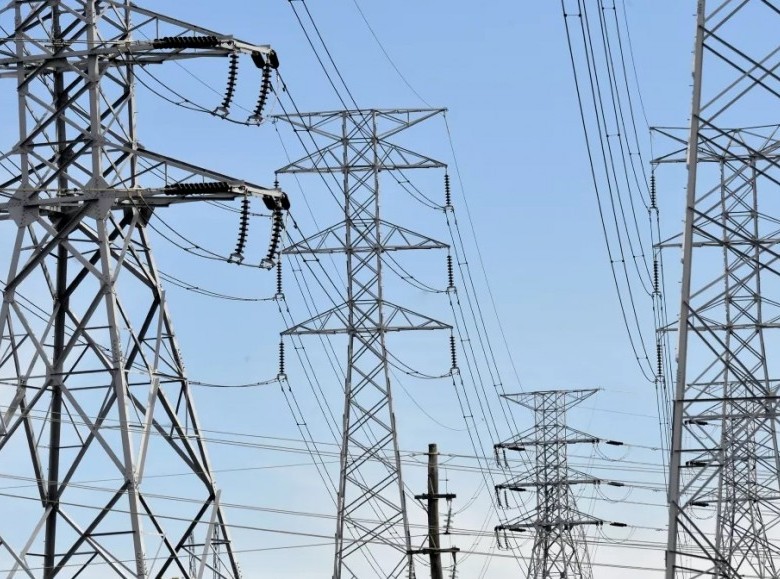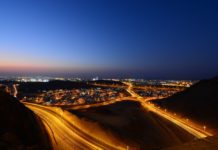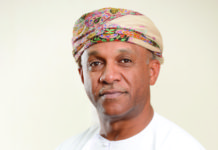The Sultanate has taken a giant step into the future by tapping into the abundant sources of energy available from the sun and wind

The power sector is gearing up to take a giant step forward, to meet energy needs of the country, with a larger footprint in solar and wind energy. By year 2024, many projects in their initial stages now, will be able to make a big difference to the Sultanate’s power needs. The Oman government is taking steps to diversify its energy mix by boosting the capacity of renewable energy projects. These projects are expected to contribute a minimum of 10 per cent in total power generation by 2025. The high-powered Financial Affairs and Energy Resources Council has asked Oman Power and Water Procurement Company (OPWP) to raise renewable energy capacity to 2,500-3,000 megawatt (MW) or 10 per cent of total power generation by 2025.
Solar PV Systems
All of the projects — based predominantly on solar photovoltaic (PV) systems and wind energy — will be large-scale developments of capacities estimated in hundreds of megawatts. Adding new momentum to the government’s nascent renewables energy programme, steps have already been taken to develop a 500 MW solar project in Ibri, which is expected to meet the electricity demand of 33,000 homes and offset 340,000 tonnes of carbon dioxide emissions a year. Considered as one of the largest solar projects in the entire Gulf region, the country’s first utility-scale solar independent power project (IPP) is estimated to cost approximately $500 million and will be built, owned and operated by the private sector. The OPWP, which floated a request for qualification (RfQ) tender, has prequalified 12 companies and consortia for the proposed 500-MW solar project. And the project tender will be awarded in the fourth quarter of 2018, and it is slated for commercial operation by early 2021. As wind power is another focused area for strengthening the contribution of renewable energy in energy mix, the work on Dhofar wind power has already been started. Two agreements linked to the development of a planned 50 megawatt-capacity Dhofar wind power project were signed by Rural Areas Electricity Company with Oman Power and Water Procurement Company and Oman Electricity Transmission Company last year.
Abu Dhabi’s renewable energy company, Masdar, earlier signed an engineering, procurement and construction (EPC) contract with a global consortium comprising GE and Spain’s TSK to build the Dhofar Wind Power Project, the first large-scale wind farm in Oman and the GCC. The authorities have also unveiled plans for six new solar and wind powered projects aimed at delivering a total of around 2,650 MW of renewables based capacity by 2024. The new renewable-based capacity includes three large-scale solar PV schemes – each of around 500 MW capacity. These ventures are referred to as Solar IPP 2022, Solar IPP 2023 and Solar IPP 2024, indicating that they are slated to come on stream in the years 2022, 2023 and 2024, respectively. It is expected that the three new solar PV projects will be established in three locations — Ibri, Manah and Adam — which have been identified as the most ideal for solar-based schemes.
Wind-based Power
In addition, three new wind-based power projects are planned for procurement and implementation as IPPs over the 2018-2024 time-frame. The three major wind power projects, planned in Dhofar and Duqm, will have a combined capacity to generate 650 MW of power. The six new renewables-based power projects represent an ambitious effort by OPWP to reduce the country’s dependence on gas-based power generation by around 97 per cent of its power consumption. In line with the policy, the country’s electricity regulator – Authority for Electricity Regulation – last year announced incentives for those households who build roof-top solar project. Like several other countries, this will encourage use of rooftop-based solar panel for household power generation by housing units.
The demand for electricity in the country has grown at the rate of 6 per cent last year. The electricity generation capacity has grown to 6,116 megawatt in 2017, from 2,314 megawatt in 2004, indicating an annual growth rate of 8.3 per cent. Demand for power is growing mainly due to population driven residential growth, the overall economic growth, developments in industrial estates/free zones and tourism projects.
In line with a strategy to reduce use of gas, Oman is also planning an independent coal-fired power plant as well with a capacity to generate 1,200 megawatt of power. Accordingly, the OPWP has issued a request for qualifications inviting international developers to submit their technical qualifications as the first step in a competitive tender for the development of the landmark project at Duqm in Wusta Governorate. The launch of the competitive process for the development of a coal-based IPP follows a techno-feasibility study conducted by Finland-based international consulting and engineering services firm Poyry.
Natural Gas
As gas is used for mega industries to enhance economic diversification, the authorities are finding it difficult to commit enough gas for new power projects. Natural gas allocations to consumers such as power plants were typically for long term extending over 15 to 20 year-timeframes that present significant challenges in the face of growing domestic gas demand. The power sector consumes around 20 per cent of the Sultanate’s total natural gas production, according to official data. Duqm has long been seen as ideally positioned to host a coal-based power plant because of its enabling characteristics. This includes the presence of a modern port, adjoining special economic zone, and ample land for future expansion programmes. Apart from the coal-based IPP initiated by the government, two state-owned Chinese power firms – Hebei Electric Power Design and Research and Ningxia Electric Power Design Institute — are planning to build a 300 megawatt capacity coal-fired power plant in Duqm free zone. The proposed power venture is for supplying electricity to a range of industries coming up in Oman Chinese Industrial Park.
The Chinese firms in April 2017 signed a land lease agreement with Oman Wanfang, which is managing 1,172 hectares of land for developing a major China-Oman industrial zone in Duqm. The capital expenditure of the 300-megawatt project, which will have two power trains each with 150 megawatt capacity, is estimated at $406 million. A feasibility conducted by Hebei Electric Design found that the project would be economical and the plan is to import coal from Indonesia.
Also, OPWP in coordination with the Authority for Electricity Regulation and the Environmental Service Holding Company (Beah), plans to commence preparatory work on a waste-to-energy project.






